Thai cave rescuers, who sedated boys, coach to get them out, describe harrowing moment when first boy started to come to during rescue
The boys were sedated with Ketamine for their and the diver's protection.
They had been agonizing over an impossible rescue mission for days, and time was quickly running out.
A Thai boys’ soccer team and their coach had been found alive about a mile and a half inside one of Thailand’s longest caves, Tham Luang Nang Non, almost three miles in length and twisted with caverns. Thai officials, and the teams from all over the world working with them, including British and American experts, thought that was miraculous enough.
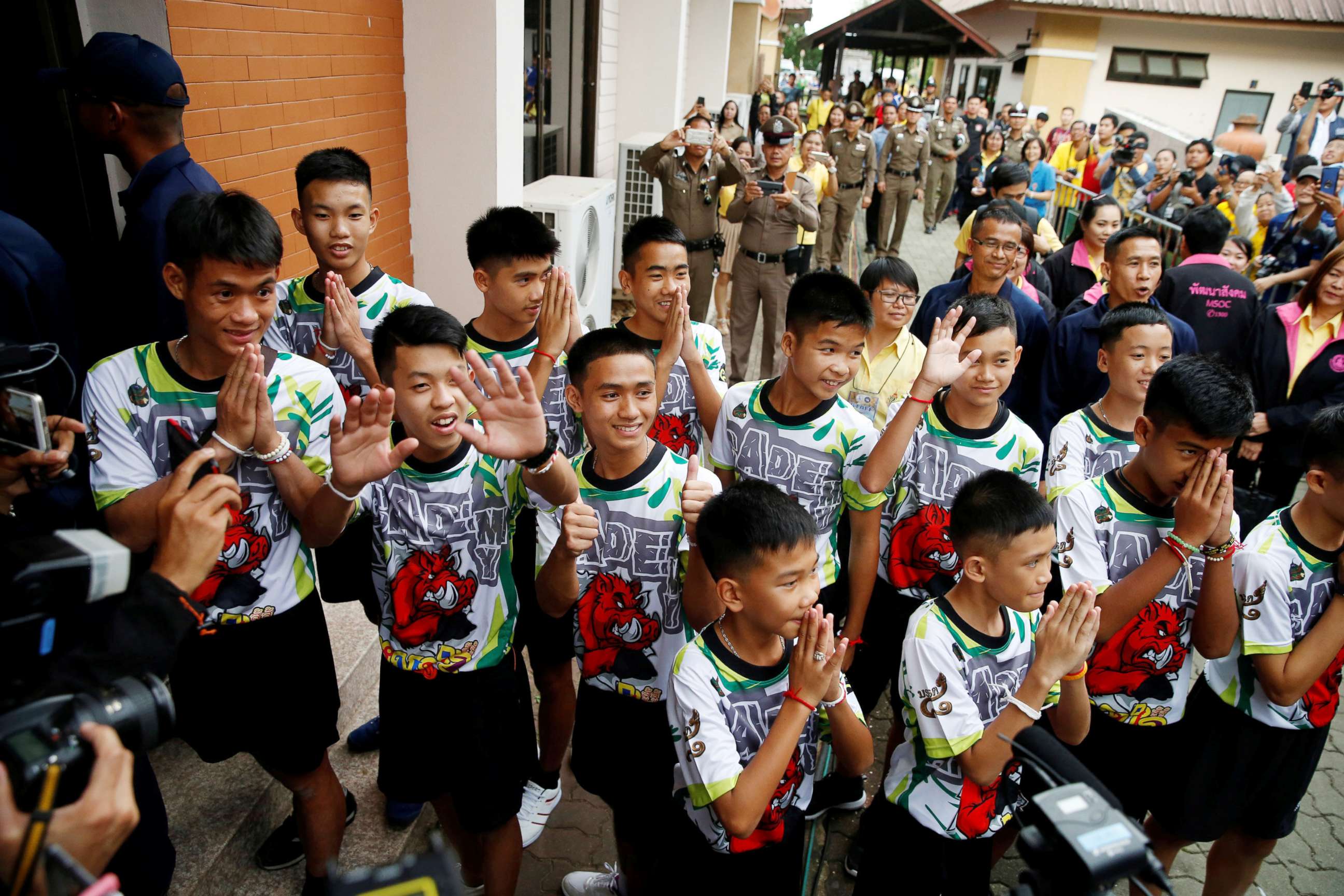
They were confident they could get them out, but the question was could they get them out all alive.
“When I was asked [the probability of success] by the [Thai] governor, what I told him is ‘I think we can probably realistically save 60 percent to 70 percent of the kids. I expect anywhere from three to five to die in this operation,’” Maj. Charles Hodges, U.S. Air Forces Special Tactics Officer, told “20/20.”
On June 23, the 12 boys, between the ages of 11 and 17, had hiked into the cave with their 25-year-old soccer coach after practice. The coach reportedly brought his team to the popular tourist site in mountainous Chiang Rai province for excursions. As it was monsoon season, rain quickly flooded the cave.
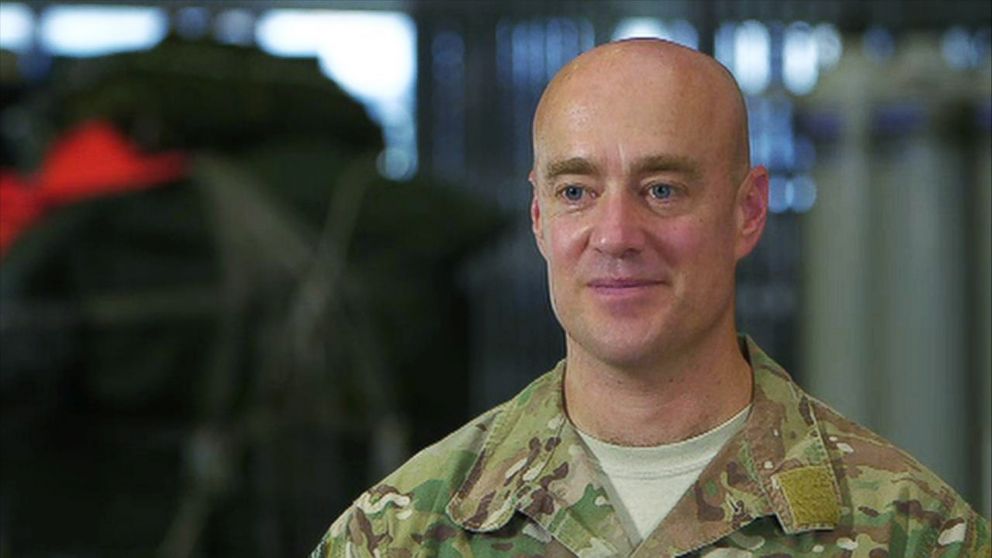
Ten days later, two British divers found the group alive deep in the cave and an international effort got underway to extract them. A team of four Thai Royal Navy SEALs and a military medic also made the hazardous trip to be at the boys and coach’s sides for the entire ordeal, staying in the cave until the last person was rescued.
What stood between the boys and the outside world, however, was about 1.5 miles of muddy chambers, half-flooded canals and fully submerged sections. The longest of the submerged sections was 350 meters, the length of seven Olympic-sized swimming pools.
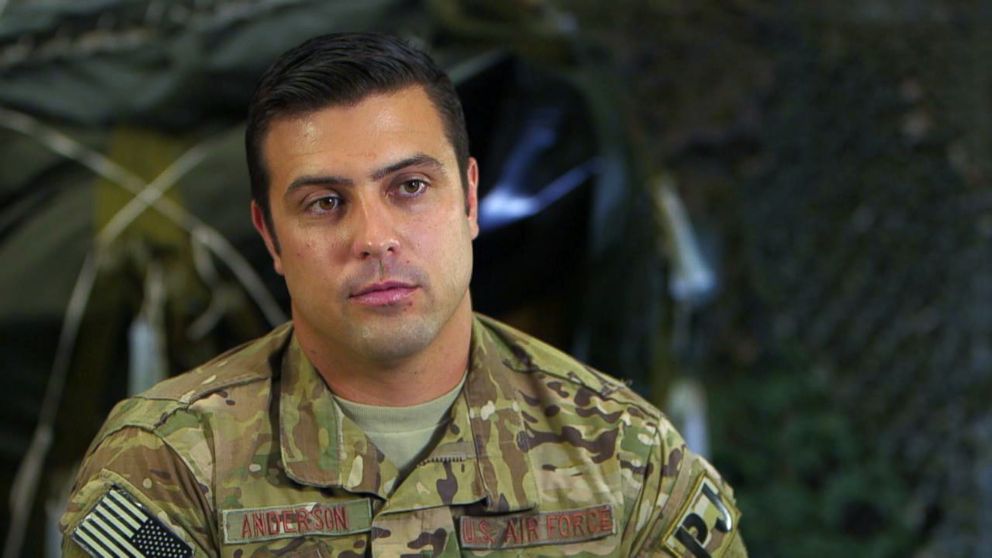
And four days after the boys were found, Saman “Sam” Gunan, 38, a former member of the Thai Royal Navy, died in the cave after losing consciousness underwater during an overnight operation delivering extra air tanks.
“According to [Sam’s] buddy, who followed Sam back, Sam was diving forward and his mouthpiece fell off, together with his mask. It looked like he was trying to grab a mouthpiece. We had three tanks of oxygen. Sam had three tanks and three mouthpieces,” Rear Admiral Apakorn Yuukongkaew, the Thailand commander of Naval Special Warfare Command, told “20/20.”
“It might be because of the cave's complexity or whatever, Sam's mouthpiece fell off. He was trying to grab it, but he couldn't find it. He was trying to take out the spare one, but due to the complexity of the cave, he lost his breath. His buddy tried first aid [on] him, by using his spare mouthpiece, but it didn’t work,” Yuukongkaew said.
Saman’s death caused the SEALS to redouble their efforts. But the British divers brought in to rescue the stranded boys and coach told the American military advisers that bringing the kids out of the flooded cave would be an impossible mission.
“They said, ‘Absolutely not.’ They said, ‘This is incredibly difficult for us too, so, you know, much less a child that’s never dove,’” Master Sgt. Derek Anderson, U.S. Air Force Special Tactics Operator, told ABC News’ “20/20.” “[They said:] ‘Honestly, our opinion is that we’re not going to be able to dive ‘em out, ‘cause it’s going to be too dangerous.’”
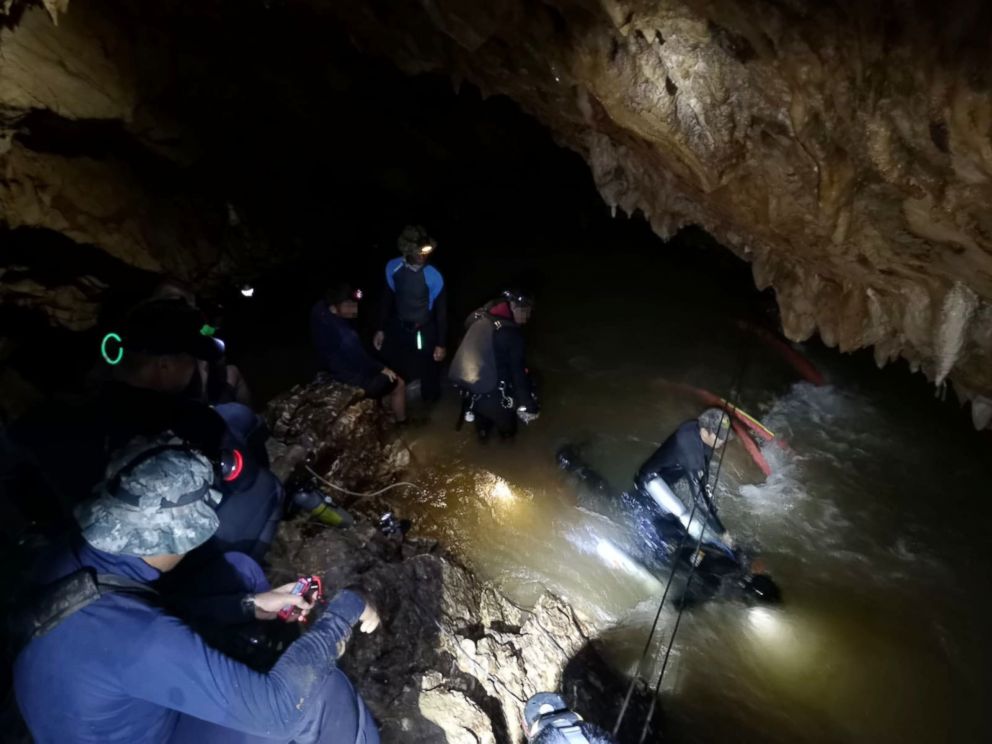
“They’re telling us this is the absolutely worst conditions that you can have for a rescue, and it was pushing the envelope for what they were comfortable with,” Hodges said.
But the international team regrouped and took another look at diving with the boys and coach to bring them out.
“I said, ‘OK, you don’t think it’s feasible.’ I said, ‘But if we were to attempt it, how would this look like to you?’ You know, these are the manpower. These are the resources that we have,” Anderson said.
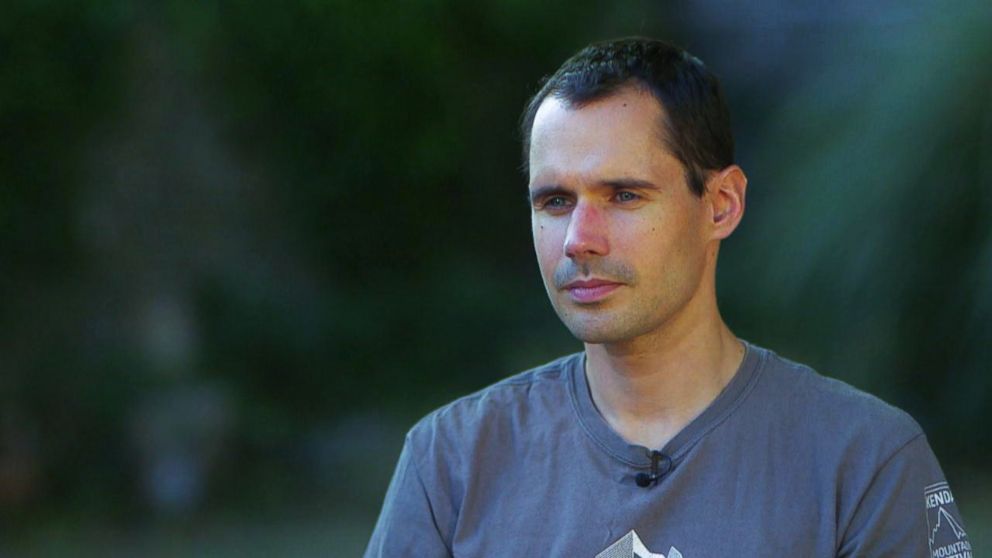
British Cave Rescue Council diver Jason Mallinson, who was one of the divers to rescue some of the boys and the coach, said he thought it was risky.
“We always knew we could get them out,” Mallinson said.
What he didn’t know, he said, is whether they “could get them out alive or not,” he told “20/20.”
Thai officials, meanwhile, searched for alternative plans, which included drilling down through the mountain where the group was located, draining the cave or simply waiting for the end of the monsoon season, which was three or four months away.
“We tried to do our best, because you [know] that 13 people are inside and you found them already. You cannot put someone inside a cave. We have to try our best to bring them out,” Narongsak Osatanakorn, governor of the Chiang Rai province at the time, told “20/20.”
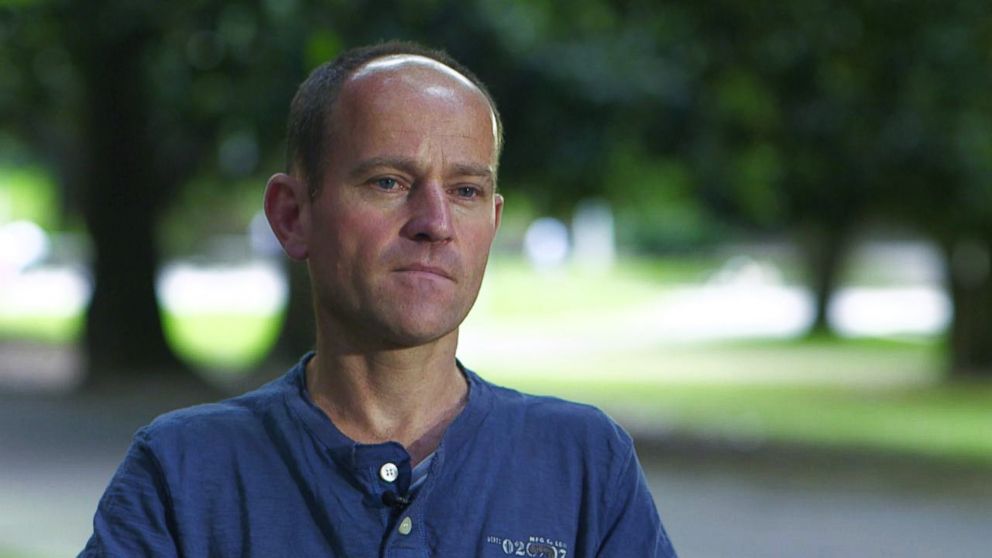
But time was running out. Another round of heavy rain was expected by July 7 and officials worried it could doom the boys and their coach. Osatanakorn said he knew that if they waited one more day, it “would have been really difficult for us.”
Knowing the weather data and that the oxygen level in the cave was in a degraded state, American advisers said diving out with the boys became the best-worst option.
“We knew that there wasn’t a zero-risk option, but we knew that the option of leaving the kids there for four to five months was a bad option,” Hodges said.
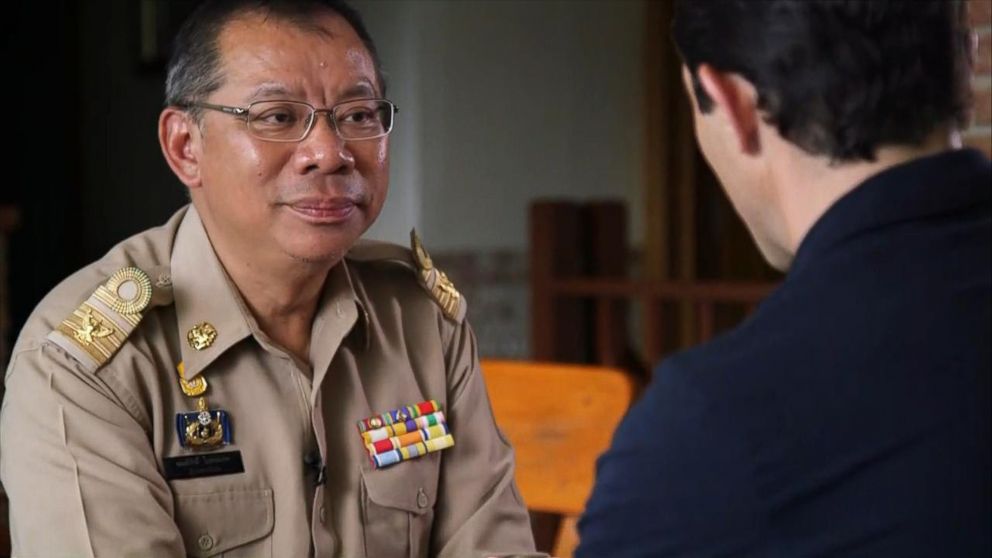
Hodges and Anderson were granted a final meeting with high-level Thai officials, which included Osatanakorn, Minister of Interior General Anupong Paojinda, a Royal Thai Navy 2-star admiral, a Third Army 3-Star commander and a Fifth Special Forces Regiment commander.
During the meeting, which was held at a command center July 6 at 9 p.m. local time, the Americans said, they explained how the mission would be carried out but that it would likely lead to some casualties. They said they urged the authorities to move quickly. This plan, the Americans said they told Thai officials, was better than leaving the 13 people in the cave for months, because that alternative would almost guarantee that no person came out alive.
“’We either have a shot where we could get some of them out, or we leave ‘em in there, and there’s a very, very high chance that none of ‘em survive,’” Anderson said he told Thai officials. “I said, ‘Man, this is our best shot.’”
The Thai officials seemed convinced, Hodges and Anderson said.
“And he (the interior minister) said, ‘That’s the best plan that we’ve heard so far. Go ahead and start planning as if you’re going to effect this rescue,’” Hodges said.
Rescuers waited for the Thai prime minister to sign off.
“I don’t know if they got an audience with the king or not, but it was definitely relayed to the prime minister,” Hodges said.
Finally, word came from the Thai prime minister the next day, Saturday, July 7, that the rescue mission was a “go.”
“It’s about 6 p.m. at night, which, thankfully, that was when we finished up with all of our phase one operations. We were ready to go at that point,” Hodges said.
When they got the “go” order, there was an eruption of furious activity.
During the mission, the boys were to wear the wet suits they had been fitted in and face masks to supply them with oxygen. Australian diver and anesthesiologist Dr. Richard Harris also injected the boys with the sedative Ketamine to knock them unconscious for their protection and the protection of the divers. British divers said if they were to attempt this rescue, the sedation was non-negotiable.
“I can’t have him [one of the boys] twitching around,” Mallinson said. “He could have harmed himself. He could have ripped his face mask off and then he was dead. It was much better for me to sedate him and keep him under, in my opinion, for him [not] to harm himself or me.”
There were so many unknowns facing them, Mallinson said, and this kind of mission had never been attempted before.
“We didn't know at first… how they were going to react to the water, whether the drug that we’d given them would be sufficient to keep them on there for the flooded sections,” he said.
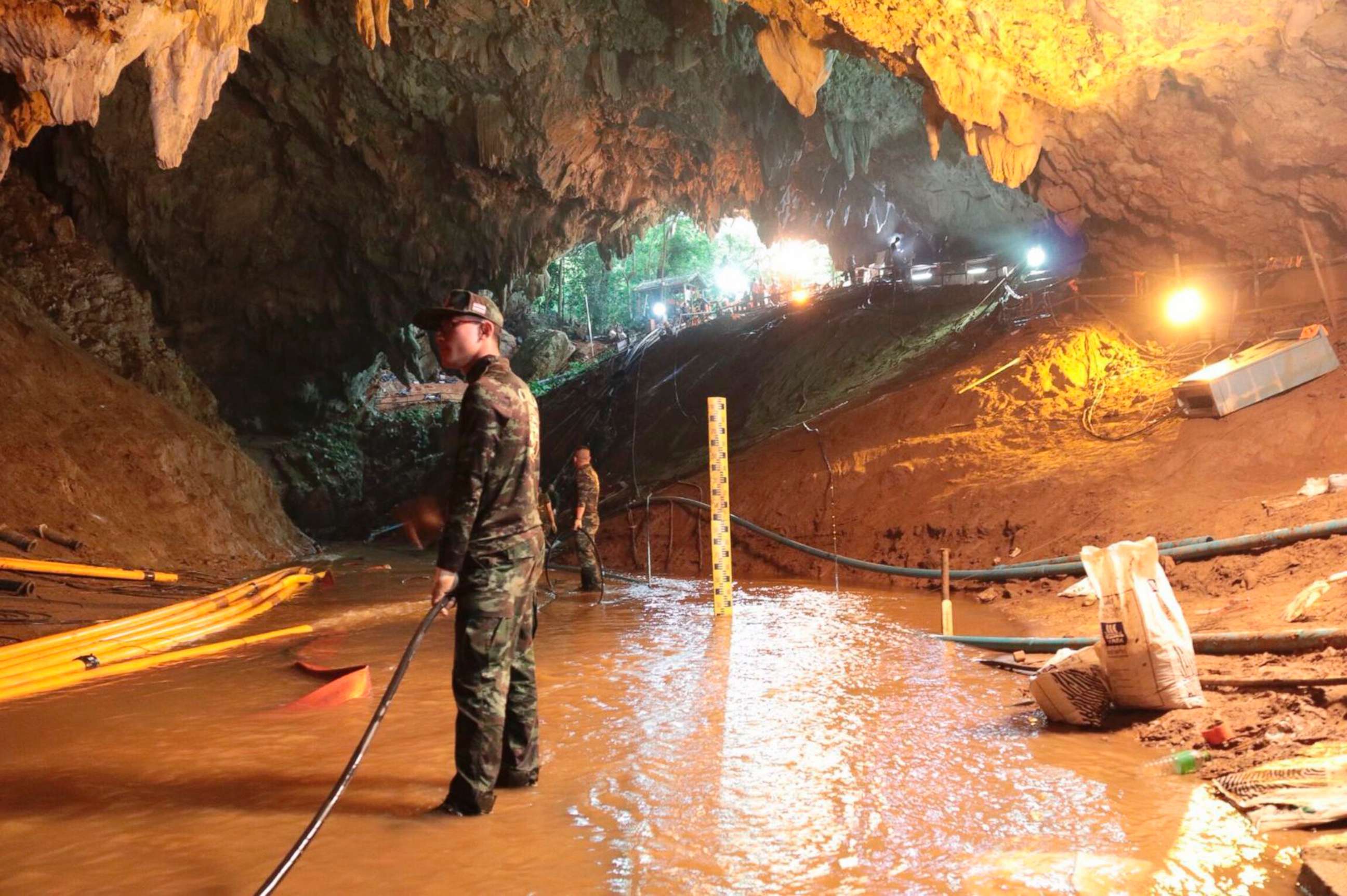
The elite foursome of British divers were each tasked with bringing out one boy at a time.
“I was confident in getting myself to the back of the cave and out again,” Mallinson said. “I was confident of being able to take one of those kids and dive them out. I was not fully confident of getting them out alive.”
When the divers reached the boys, they said they found the soccer team shockingly calm. The boys had even taken it upon themselves to decide the order of who would go out.
“Overnight they’d obviously been talking about who is going to dive first and we were presented with the boys in sequence,” Chris Jewell, a diver with the British Cave Rescue Council who was one of those who rescued the boys, told “20/20.”
The boy chosen to go first was 13-year-old Mongkol Bonpiem. He would be the human guinea pig for the rest of the team. Mallinson said he volunteered to get the first kid out.
Rescuers had given the boy a wet suit to put on and then he was injected with Ketamine – a widely used sedative.
“It’s routinely given so that people are asleep, presumably pain-free, without anxiety,” Dr. Paul Auerbach, emergency medicine expert and Stanford University professor, told “20/20.” “It has a wonderful safety profile. … Ketamine is an excellent drug for children.”
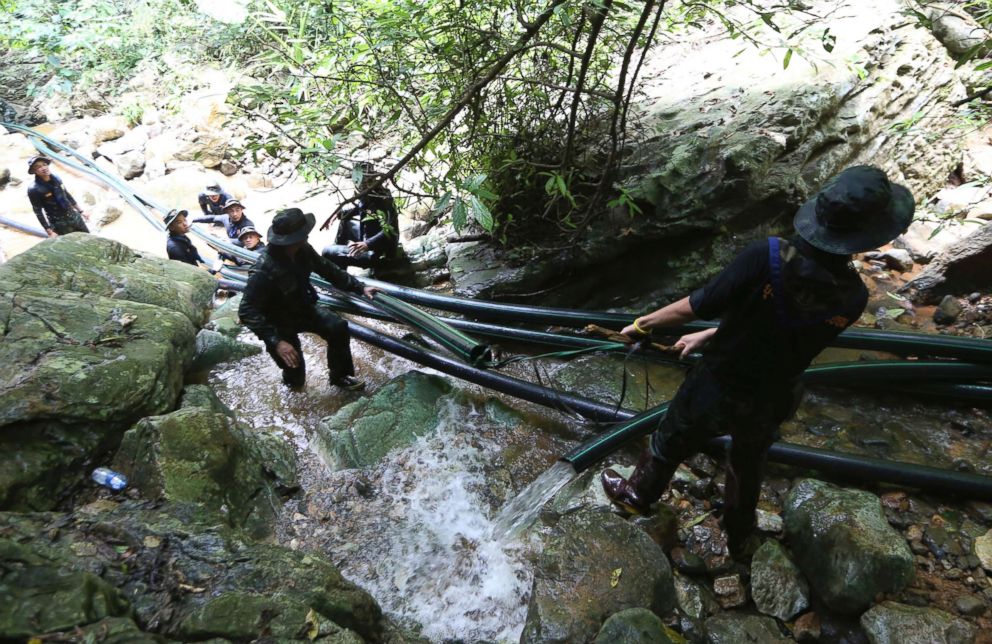
As soon as the first boy was unconscious, Mallinson began his dive. Despite being a veteran rescue diver, Mallinson said he was assailed with doubt. The first stage of the dive was 350 meters long -- the length of 1.5 football fields -- and if Mallinson’s or the boy’s face mask was dislodged by hitting a rock, the rescue mission could turn fatal.
“If that face mask had flooded … if that air supply had been compromised in any way while we were in the flooded section, they (the boys) wouldn't [have] survived,” he said. “So that was always a risk as well.”
If that had happened, Mallinson said, there would have been no other option but for him to swim with the child for their lives.
“We would just have to swim fast to get through the flooded section to the next air chamber,” he said. “We were using almost pure oxygen, 80 percent oxygen, because we'd been told that they could survive for several minutes not breathing.”
What followed next, according to Mallinson, was a sort of choreographed underwater ballet.
With one hand, he held onto a guideline as he made his way through the darkness towards the cave’s entrance. With the other hand, he held onto the strap on the boy’s buoyancy jacket as he floated facedown while wearing a facemask attached to an oxygen tank. Mallinson said that most of the time the child was underneath him or to the side, and not behind him, as some graphics have shown.
“I sort of liken it to an underwater obstacle course… in which you’re blind and you don’t remember all the obstacles on the way in,” he said.
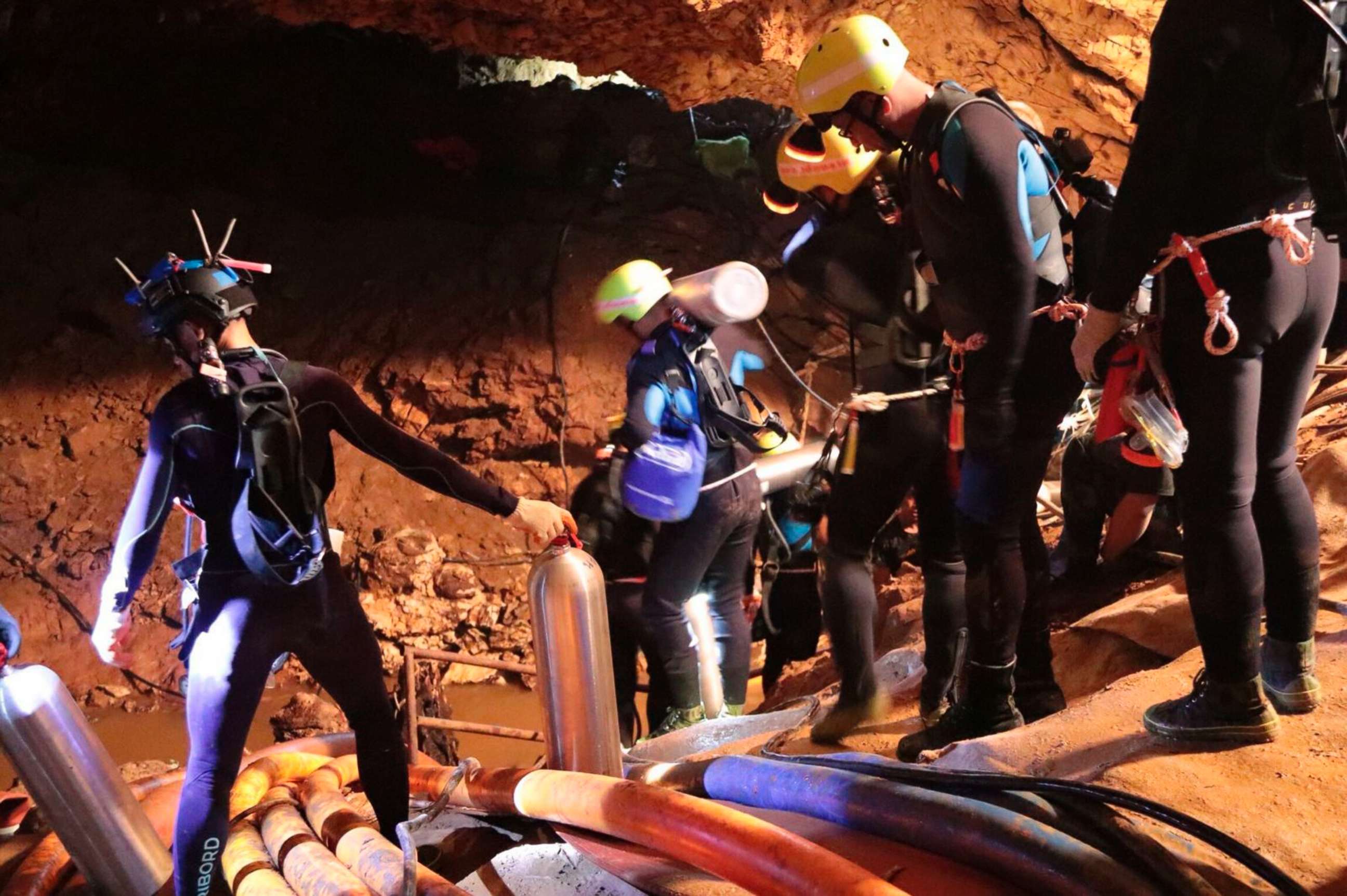
After about 20 painstaking minutes, Mallinson successfully completed the first stage dive. He was then met by two support divers who were waiting in a dry section of the cave. They helped him get the unconscious boy out of the water.
Mallinson still faced five more dive stages.
“We realized that yeah the mask worked. … The drug worked,” Mallinson said. “After that, I knew there’s a good chance we can get them all out this way.”
For the next section, Mallinson and the support divers carried the 13-year-old through the dry section of the cave to the next dive point.
Physically exhausted, Mallinson began the next part of the dive with the boy. He was guiding them through neck-deep water when the boy started to come out of sedation.
Mallinson said he realized he needed to act fast to readminister the Ketamine.
“It was very tricky,” he said. “I had syringes floating around on the surface [of the water and I was] trying to grab ahold of them. … [I had to] try and get a needle on the syringe, get his leg up and do it one-handed and get your syringes back in your dry tube.”
“The responsibility is huge,” he said.
In the final chamber, a team of medics as well as U.S. military members Anderson and Hodges waited with the Thai Royal Navy SEALs for the first boy to emerge.
“There was a line that would come up outta the water in chamber three. Until that line would start to move, we absolutely had no idea,” Anderson said. “I think it was more nerve-wracking when they said, ‘Hey, the line's moving.’ And at that point, you know, five to 10 minutes later somebody was coming up.”
After what seemed like an eternity, Mallinson and 13-year-old Mongkol emerged from the darkness.
“Everybody kind of just sighed and were like, ‘Wow, it actually worked,’” Anderson said.
The medics checked Mongkol’s vitals and he was loaded onto a stretcher for the remaining half-mile extraction through waist-deep water and over boulders. At one point, he was even connected to a zip line to make it easier to move him. When the team got him to the cave entrance, Mongkol was immediately rushed to an ambulance.
“It felt great,” said Osatanakorn, the former provincial governor. “I think that everyone in the front line felt great. ... It was a big relief.”
Rescue divers brought up three more boys that first day, tweaking the maneuver plan as they went. Mallinson said that in following rescues the support divers were better positioned throughout the cave mission.
Once each ambulance carrying a boy sped away, the rescue team knew they would have to begin their mission all over again. They still had a long way to go.




